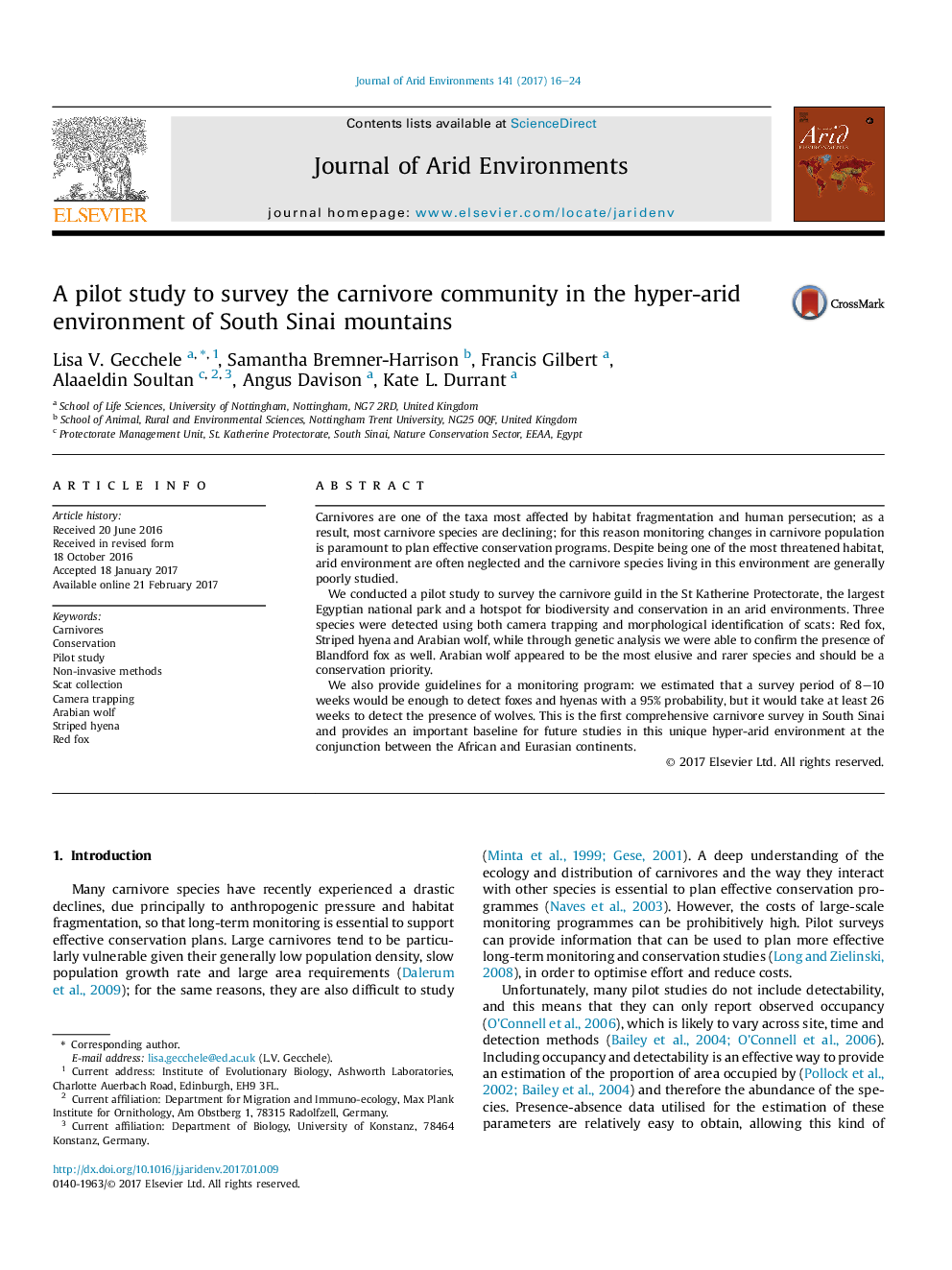| Article ID | Journal | Published Year | Pages | File Type |
|---|---|---|---|---|
| 5744305 | Journal of Arid Environments | 2017 | 9 Pages |
â¢We performed a pilot study to survey the carnivore guild of St Catherine Protectorate, South Sinai.â¢We used two non-invasive survey techniques: scat collection and camera trapping.â¢Three species of carnivores were detected, Red fox, Striped hyena and Arabian wolf.â¢Camera trapping proved to be the most effective method to detect carnivore species.â¢Arabian wolves was the rarest species and should be a conservation priority.
Carnivores are one of the taxa most affected by habitat fragmentation and human persecution; as a result, most carnivore species are declining; for this reason monitoring changes in carnivore population is paramount to plan effective conservation programs. Despite being one of the most threatened habitat, arid environment are often neglected and the carnivore species living in this environment are generally poorly studied.We conducted a pilot study to survey the carnivore guild in the St Katherine Protectorate, the largest Egyptian national park and a hotspot for biodiversity and conservation in an arid environments. Three species were detected using both camera trapping and morphological identification of scats: Red fox, Striped hyena and Arabian wolf, while through genetic analysis we were able to confirm the presence of Blandford fox as well. Arabian wolf appeared to be the most elusive and rarer species and should be a conservation priority.We also provide guidelines for a monitoring program: we estimated that a survey period of 8-10 weeks would be enough to detect foxes and hyenas with a 95% probability, but it would take at least 26 weeks to detect the presence of wolves. This is the first comprehensive carnivore survey in South Sinai and provides an important baseline for future studies in this unique hyper-arid environment at the conjunction between the African and Eurasian continents.
